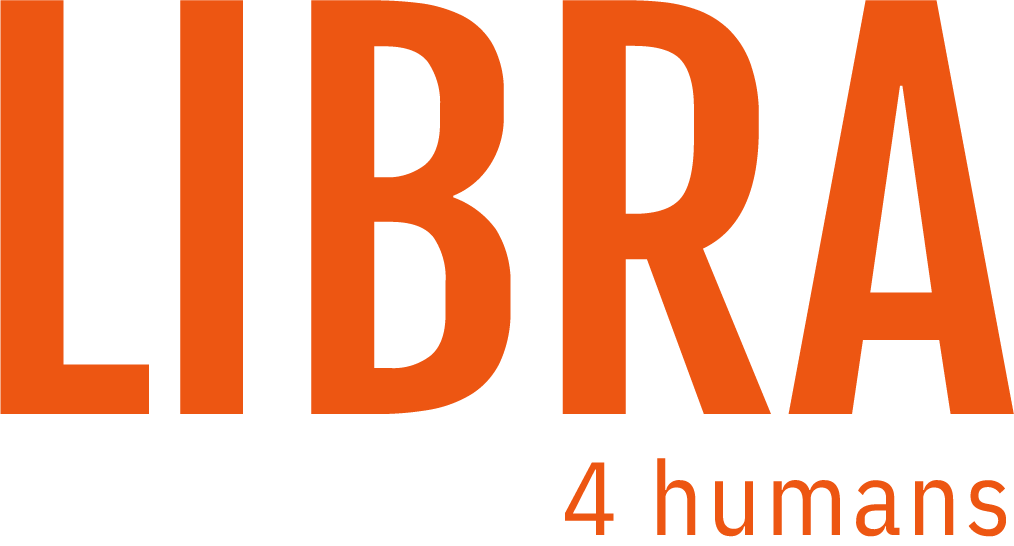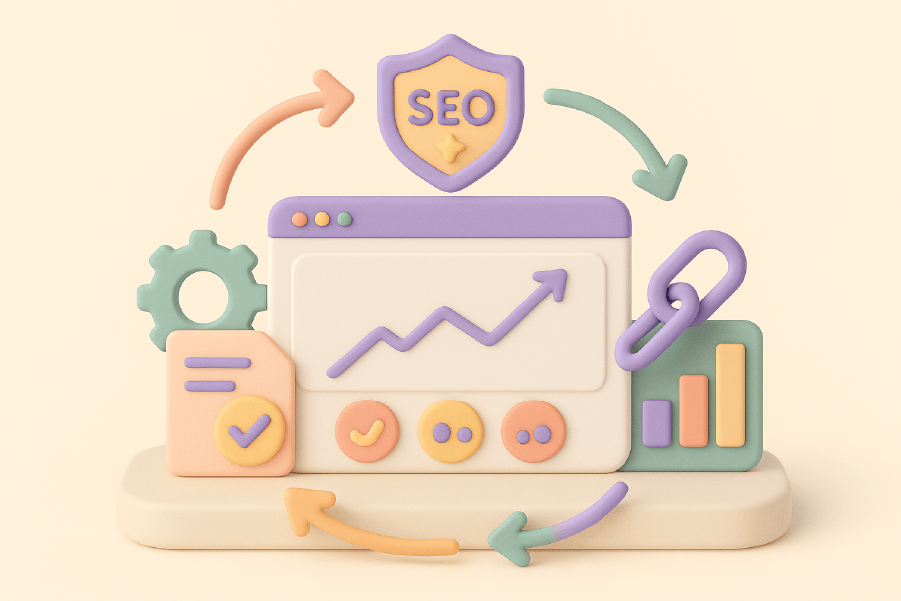Looking to market your website effectively online and drive more traffic and engagement? This guide will walk you through essential strategies like SEO, social media marketing, and email marketing. Dive in to discover actionable steps to promote your website and achieve your business goals.
Key Takeaways

Digital marketing is essential for increasing brand visibility and customer engagement, allowing businesses of all sizes to compete effectively online.

Key components of a successful digital marketing strategy include SEO, content marketing, social media marketing, and email campaigns, each playing a vital role in driving traffic and conversions.

Measuring success through KPIs like website traffic, engagement, and conversion metrics is crucial for optimizing digital marketing efforts and achieving business goals.
Importance of Digital Marketing for Websites

Digital marketing encompasses a variety of strategies, including SEO, social media, and email marketing, which are essential for defining business goals. It enables businesses to reach audiences where they spend most of their time—online—allowing for better connection with potential customers through digital marketing channels. This connection is vital for enhancing a brand’s visibility and engagement, as it links brands to potential customers via the Internet.
Moreover, digital marketing levels the playing field, allowing smaller businesses to effectively compete with larger corporations by leveraging various online marketing platforms. This democratization of marketing ensures that even startups and SMBs can carve out a significant online presence without the massive budgets that larger corporations might wield.
Ultimately, digital marketing plays a crucial role in driving traffic and enhancing customer engagement, thus ensuring long-term business success. Robust digital marketing strategies help businesses achieve their goals, increase brand awareness, and foster customer loyalty—all essential for sustained growth.
Key Components of a Successful Digital Marketing Strategy
A successful digital marketing strategy typically encompasses several key components, including:
SEO
PPC
Content marketing
Social media marketing
Email marketing
These elements work together to enhance brand visibility and drive website traffic. Content marketing, for instance, aims to reach potential customers through engaging content, while pay-per-click (PPC) ads drive traffic and offer high ROI through refined targeting.
Each component of your digital marketing strategy should be tailored to meet specific marketing goals and connect with your target audience. From creating valuable content to optimizing your website for search engines, each tactic plays a critical role in the overall success of your marketing campaigns.
Each component of digital marketing plays a crucial role and can be effectively implemented to boost results.
Content Marketing
Content marketing is a powerful tool that attracts leads and converts them into loyal customers. One of the key benefits of digital marketing is increasing brand awareness, helping potential customers recognize a brand over time. In fact, content marketing can generate three times more leads than traditional marketing methods, making it a crucial part of any digital marketing strategy.
A well-crafted content marketing strategy contributes to a comprehensive website marketing plan. The main aim of content marketing is to educate and provide value to readers.
For example, a luxury service provider improved its brand reputation and attracted high-value clients by leveraging targeted content marketing strategies. Similarly, another luxury brand enhanced its online reputation by using high-quality content that appealed to affluent customers.
Search Engine Optimization (SEO)
Effective SEO improves a website’s visibility, helping it to rank higher in search engine results. The goal of search engine optimization (SEO) is to rank content at the top of search engine results pages. This significantly increases visibility and drives organic traffic to your website.
SEO strategies can be divided into on-page and off-page tactics. On-page SEO targets the optimization of elements within a website. This includes improving keywords and overall page performance that users interact with. Off-page SEO, on the other hand, involves optimizing activities outside of your website to improve rankings, such as guest posting and backlinks.
For instance, a small business implemented targeted SEO strategies, leading to a significant increase in organic traffic and online sales.
Social Media Marketing
Social media marketing plays a pivotal role in promoting website content, engaging with audiences, and driving traffic. Leveraging social media platforms allows businesses to rapidly boost brand visibility and attract a substantial customer base. For example, a startup utilized social media marketing creatively to achieve rapid growth and significantly expand its customer base.
Moreover, social media marketing enhances customer engagement by integrating personalized digital marketing strategies with a strong social media presence. This personalized approach not only boosts social media engagement but also helps in building a loyal customer base. Consistent interaction with your audience on social media channels creates a more engaging and dynamic online presence.
Email Marketing Campaigns
Email marketing is a form of digital marketing used by B2B and B2C marketers to collect customer data and communicate offers. Despite the common misconception that email marketing is associated with spam, it remains one of the most effective digital marketing strategies. The main goal of email marketing is to turn leads into customers.
Content in email marketing can include product information, company news, personalized offers, and customer success stories. Engagement is essential through valuable content and personalized, relevant offers.
For instance, a website can support email newsletters with information and blog posts, direct traffic to the website, and provide discount codes. Email marketing can yield an impressive ROI, often returning $44 for every $1 spent.
Enhancing Website Performance Through Digital Marketing

Enhancing website performance through digital marketing involves optimizing various aspects of your website to improve user engagement and conversion rates. Mobile optimization is crucial as mobile usage now dominates web traffic, influencing overall engagement. Improving page load speed is vital since slow-loading content can lead users to abandon the site.
Sophisticated marketing strategies can significantly enhance website traffic and user interaction. Successful digital marketing campaigns often leverage unique brand stories and user engagement to enhance performance and drive conversions in a marketing campaign.
Let’s explore how mobile optimization, user experience (UX), and conversion rate optimization (CRO) can contribute to a better-performing website.
Mobile Optimization
Mobile marketing encompasses strategies specifically designed for mobile devices, including engagement through SMS. In 2024, mobile traffic represented 60% of all Internet traffic. This highlights its significant role in online activity. Content should be optimized to ensure it performs well on mobile devices, allowing for higher engagement and retention.
It is crucial to maintain a seamless experience for users transitioning between mobile and desktop platforms. Failing to engage users on a website can lead them to seek alternatives, emphasizing the need for a strong mobile presence. Incorporating features like live chat can facilitate quicker responses for potential customers visiting via mobile.
User Experience (UX) and Design
A poorly designed website can lead to loss of engagement, negatively influencing customer perception. Great web design promotes branding, enhances SEO, improves user experience, and boosts conversion rates. Marketers face challenges such as rapidly proliferating digital channels, analyzing large data volumes, and capturing consumer attention amid numerous distractions.
Live chat functionality or help articles can facilitate quick responses for potential customers on a website. Focusing on UX and design leads to a more engaging, user-friendly website that boosts customer engagement and drives conversions.
Conversion Rate Optimization (CRO)
CRO involves analyzing user interactions on a website to identify areas for improvement, ultimately aiming to increase the percentage of visitors who complete desired actions. Analyzing user behavior is key to optimizing conversion rates through informed, data-driven changes. Conversion rate is the percentage of visitors who complete a desired action on the website, such as making a purchase or signing up for a newsletter.
Goal completions track the number of times visitors achieve specified objectives, such as signing up or making a purchase. Focusing on CRO enhances a website’s effectiveness in converting visitors into customers, driving growth and profitability.
Leveraging Paid Advertising for Immediate Results

Paid advertising allows businesses to quickly position their brand in front of potential customers, often yielding immediate traffic and conversions. It provides quick visibility and targeted traffic to websites, making it an essential component of any digital marketing strategy. Search engine marketing (SEM) is a type of PPC advertising on search engines, offering immediate results through paid placements.
Paid advertising enables businesses to achieve rapid growth and enhance their online presence. Let’s explore the different types of paid advertising, including PPC, social media ads, and native advertising, to understand how they can be effectively utilized.
Pay-Per-Click (PPC) Advertising
Pay-per-click (PPC) advertising refers to a model where advertisers pay for each click on a designated link. It is a way to drive traffic by paying for user interactions. In PPC advertising, payment is only made when a user clicks on the ad, making it a performance-based model. PPC campaigns can deliver results almost instantly, allowing businesses to gain visibility and traffic quickly.
Creating a PPC campaign enables your ads to appear in search engine results within minutes. Google Ads, LinkedIn Ads, Bing Ads, and Instagram Ads are some common platforms utilized for PPC. These platforms help businesses promote their products and services effectively.
PPC campaigns allow for precise targeting based on demographics, interests, and online behaviors. While PPC can be cost-effective, ad prices can vary significantly, leading to potentially high costs for certain keywords. The average return on investment (ROI) for PPC advertising can be $2 for every $1 spent.
Social Media Ads
Paid ads on social media can significantly boost brand awareness by repeatedly exposing potential customers to your brand. A startup can experience rapid growth by utilizing targeted social media ads to build brand awareness and attract customers. For example, a startup effectively utilized social media marketing and targeted online campaigns, resulting in a significant increase in its customer base within a short timeframe.
Social media ads offer precise targeting options, allowing businesses to reach their ideal audience based on demographics, interests, and behaviors. By leveraging the power of social media platforms, businesses can enhance their online presence and drive targeted traffic to their websites.
Native Advertising
Native ads are designed to blend in with website content, enhancing user engagement without being intrusive. These ads provide a seamless experience for users, making them more likely to engage with the content. Native advertising can be a powerful tool for increasing brand awareness and driving targeted traffic to your website.
Integrating native ads into your strategy creates more engaging and effective campaigns that resonate with your target audience. This approach ensures that your ads are seen by the right people at the right time, ultimately driving conversions and business growth.
Advanced Digital Marketing Tactics

Advanced digital marketing tactics can significantly enhance website traffic and engagement, particularly for luxury brands. Utilizing sophisticated digital marketing strategies allows businesses to effectively target the right demographics, ultimately boosting website traffic and engagement. Luxury brands can enhance their market presence by using personalized digital marketing tactics that focus on high-end customer experiences.
Let’s explore some advanced tactics, including influencer marketing, retargeting campaigns, and video marketing, to understand how they can be effectively implemented.
Influencer Marketing
Influencer marketing supports brands by leveraging the reach of influential figures. This strategy involves partnering with influencers to endorse your brand or co-create content, which can significantly increase brand awareness and credibility. Influencer marketing typically involves paying influencers a flat fee rather than profit sharing, distinguishing it from affiliate marketing.
A remarkable 89% of marketers indicate that influencer marketing delivers a similar or superior ROI compared to other channels. This highlights the effectiveness of influencer strategies in reaching audiences. Collaborating with the right influencers taps into new audiences and boosts digital marketing efforts, driving more traffic and conversions.
Retargeting Campaigns
Retargeting involves displaying tailored ads to individuals who have previously visited your website but did not make a purchase. This strategy allows you to re-engage potential customers who have already shown interest in your products or services. Using pixel-based retargeting allows immediate targeting of past visitors through cookies placed on their browsers.
List-based retargeting utilizes specific lists of past visitors or customers for targeted advertising. Retargeting campaigns significantly increase conversion rates, maximizing digital marketing efforts. This approach ensures that you stay top-of-mind with potential customers, encouraging them to return and complete their purchase.
Video Marketing
Video marketing is the approach of promoting a business through video content to capture attention and drive traffic. Effective video marketing can lead to increased brand recognition and higher conversion rates from viewers. Popular platforms for video marketing campaigns include YouTube, Facebook Videos, Instagram, and TikTok.
Platforms like YouTube and TikTok are critical for executing video marketing strategies through a digital channel due to their large target audiences. A significant percentage of consumers, about 70%, have made purchases after viewing a brand’s content on YouTube.
Integrating video marketing with other strategies, such as SEO and social media marketing, enhances overall success. Keeping videos short and to the point helps maintain viewer engagement.
Measuring Success: Key Performance Indicators (KPIs)
Digital marketing key performance indicators (KPIs) are important metrics. They are used to assess the performance of marketing campaigns. Improving website performance requires a comprehensive analysis of various digital marketing strategies and ongoing adjustments. Understanding and tracking KPIs is essential for assessing the effectiveness of your digital marketing efforts and making data-driven decisions.
Digital marketing success stories demonstrate the effectiveness of tailored strategies in enhancing website performance and achieving measurable results through a digital marketing campaign. Focusing on key KPIs allows businesses to optimize their strategies for better results and goal achievement.
Website Traffic Metrics
Website traffic metrics are crucial for understanding the overall performance of your digital marketing campaigns. Page views count how many times a page is accessed, including repeat visits. Sessions represent a collection of user interactions on a website over a specific timeframe. These metrics help you gauge the reach and effectiveness of your content marketing and SEO efforts.
Analyzing website traffic metrics helps identify trends, understand user behavior, and make informed decisions to improve strategies. Tools like Google Analytics provide valuable insights into website traffic, helping you track and optimize your performance.
Engagement Metrics
Engagement metrics are crucial for understanding how users interact with your website. Here are some key metrics to consider:
Bounce rate: Measures the percentage of visitors who leave after viewing only one page.
Average session duration: Indicates how long, on average, visitors stay engaged with the website.
Pages per session: Reflects how many pages a visitor views in a single visit, indicating their level of interest.
Understanding these metrics can help you improve user engagement and optimize your website’s performance.
These metrics provide insights into user behavior and website performance, helping you identify areas for improvement and optimize your digital marketing strategies. Focusing on engagement metrics enhances customer interaction and drives better marketing results.
Conversion Metrics
Conversion metrics are essential for measuring the success of your digital marketing campaigns. Digital marketing allows companies to track and analyze their campaign performance easily, helping them make necessary adjustments. Retargeting campaigns can boost conversion rates significantly, sometimes exceeding 160%. The ROI of email marketing is 4,200%, highlighting its effectiveness in achieving goal completions.
Tracking customer lifetime value helps businesses understand long-term profitability and adjust marketing strategies accordingly. Focusing on conversion metrics optimizes marketing efforts to drive more sales and achieve goals.
Case Studies: Real-World Applications of Digital Marketing

Digital marketing campaigns have transformed brands like Airbnb and Starbucks, showcasing effective engagement tactics. These case studies provide valuable insights into how digital marketing strategies can be successfully implemented to achieve business growth and enhance customer engagement.
Studying real-world applications of digital marketing allows businesses to learn from others’ successes and challenges, applying these lessons to their own strategies. Let’s explore two case studies that highlight the impact of digital marketing on startups and SMBs.
Startup Success Story
Startups that implement innovative digital marketing strategies can achieve rapid growth and significantly expand their customer base. For instance, a startup utilized creative digital marketing campaigns to attract potential customers and convert them into loyal clients. By leveraging social media marketing, content marketing, and paid advertising, the startup was able to quickly build brand awareness and drive targeted traffic to its website.
Through these efforts, the startup not only gained new customers but also fostered strong relationships with existing customers. This holistic approach to digital marketing ensured sustained growth and long-term success.
SMB Growth Case
Digital marketing is crucial for the growth of small to medium-sized businesses as it helps increase visibility and drive targeted traffic. A successful digital marketing strategy for SMBs includes effective content marketing to engage and convert potential customers. Search engine optimization is essential for improving online visibility, making it a priority for SMBs aiming for growth.
Utilizing social media marketing can significantly enhance an SMB’s ability to reach and interact with their target audience. Email marketing campaigns can effectively convert leads into sales and foster ongoing customer relationships. By implementing these digital marketing strategies, SMBs can achieve substantial growth and build a strong online presence.
Summary
Digital marketing is an indispensable tool for businesses looking to enhance their online presence and drive growth. From content marketing to SEO, social media marketing, and email campaigns, each component plays a crucial role in achieving business goals and connecting with potential customers. By leveraging paid advertising and advanced tactics like influencer marketing, retargeting, and video marketing, businesses can achieve rapid growth and sustained success.
Measuring success through key performance indicators (KPIs) ensures that businesses can track their progress and make data-driven decisions to optimize their digital marketing strategies. Real-world case studies highlight the transformative power of digital marketing, providing valuable insights and inspiration. By implementing the strategies outlined in this guide, businesses can boost their website traffic, increase brand awareness, and achieve long-term success.
Frequently Asked Questions
Why is digital marketing important for businesses?
Digital marketing is crucial for businesses as it allows them to effectively reach their target audience, enhance brand visibility, and boost website traffic, resulting in greater engagement and higher conversion rates.
What are the key components of a successful digital marketing strategy?
A successful digital marketing strategy comprises key components such as content marketing, SEO, social media marketing, email marketing, and paid advertising, each essential for achieving business goals and engaging your target audience effectively.
How can businesses measure the success of their digital marketing efforts?
To effectively measure the success of digital marketing efforts, businesses should track key performance indicators (KPIs) such as website traffic, engagement, and conversion metrics using tools like Google Analytics. This approach provides valuable insights into performance and areas for improvement.
What are the benefits of influencer marketing?
Influencer marketing significantly boosts brand awareness and credibility by leveraging the reach of influential figures. This partnership enhances engagement and can lead to increased conversions for your brand.
How can small to medium-sized businesses (SMBs) benefit from digital marketing?
Small to medium-sized businesses can significantly benefit from digital marketing by enhancing their visibility, driving targeted traffic, and fostering customer engagement through content marketing, SEO, social media, and email campaigns. By leveraging these strategies, SMBs can achieve impressive growth and establish a robust online presence.






